OnePlus is releasing a new tablet for spring, with the ambition of making it the most attractive, both in form and substance. Can the OnePlus Pad Go really shake up the tablet market? While waiting for the complete test, we have taken charge of it for you.
OnePlus is above all known for its smartphones, like the latest OnePlus 12 and 12R. The manufacturer launched into the tablet market last year, with the same arguments as for its smartphones: the best of technology at a fair price. The new OnePlus Pad GO was officially announced on April 17 and we got to grips with it for a few hours.
Design and ergonomics: beautiful and seductive work
The design of this tablet is a real success, even if the inspiration from the previous generation iPad is palpable. We have a very elegant tablet, which displays curvy edges and nicely rounded corners. On the front, we find an 11.35 inch (28.85 cm) screen surrounded by a fairly thick border: the screen only represents 84% of the front surface. This at least allows the camera to be placed in the border for more discretion.
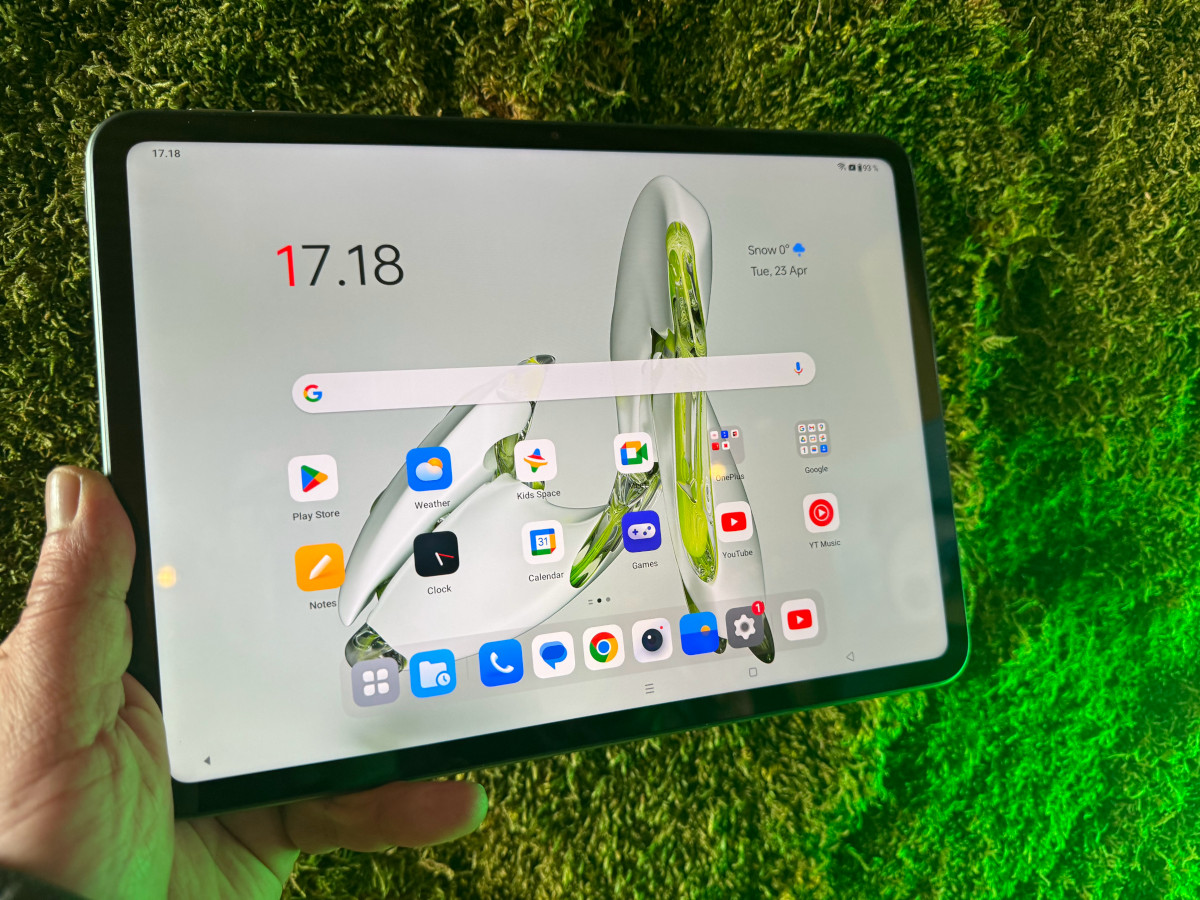
The real charm of this tablet is its metal back with a two-tone finish. Thus, the main part of the back is in matte metal, topped by a metal edge, but shiny. Aesthetically, it is a success and it provides a soft touch when the fingers are placed on the back. Be careful, the shiny part is a real fingerprint trap. In the center of this segment we find a photo block which has the good taste of not being too thick.
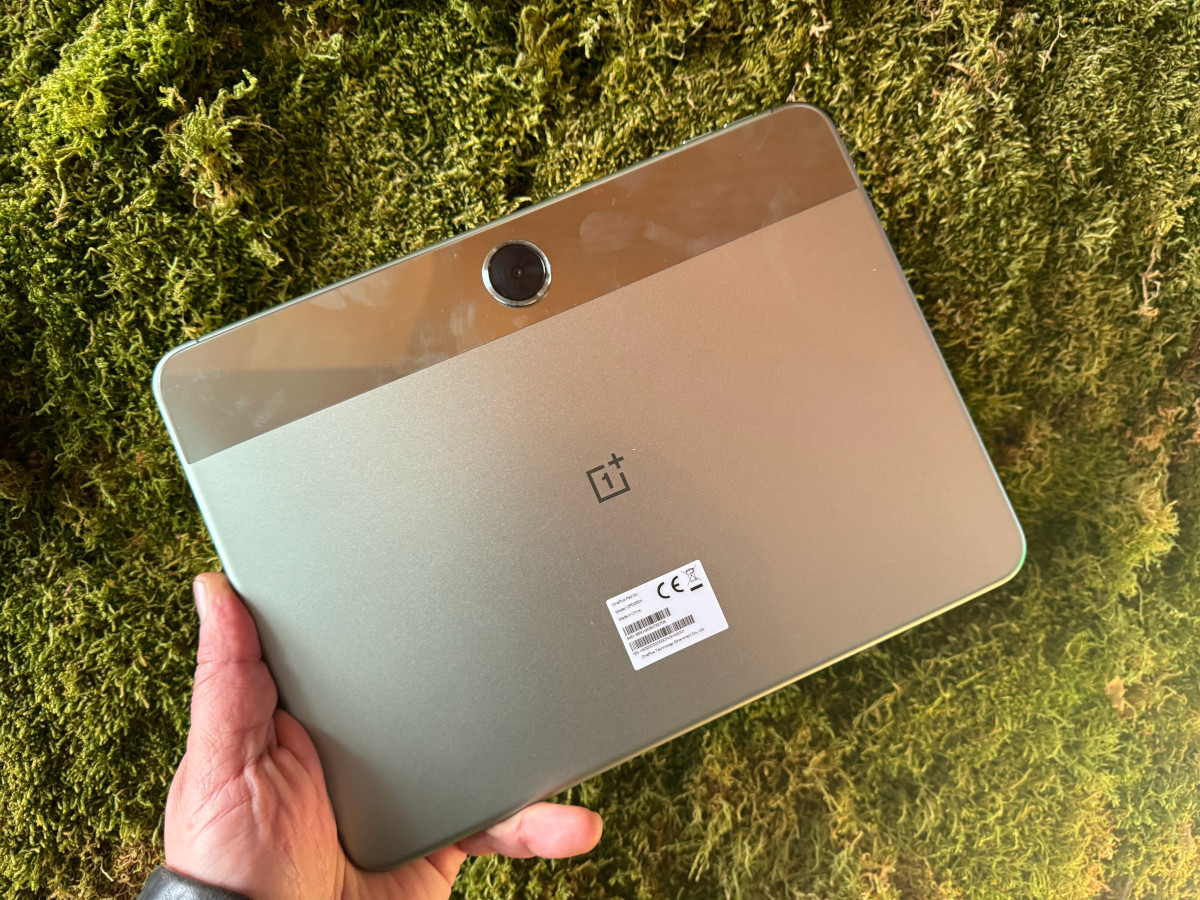
It has dimensions of 25.512 x 188.04 x 6.89 mm for 532 g. For comparison, the iPad Air has dimensions of 247.6 x 178.5 x 6.1 mm for 462 g and the Galaxy Tab S6 Lite has dimensions of 244.5 x 154.3 x 7.0 mm for 465 g , while the Xiaomi Pad 6 measures 253.9 x 165.2 x 6.5 mm for 490 g.
The upper edge (in landscape mode) contains the power and volume management buttons. The one on the right provides access to a 5G SIM card port and the one on the left provides access to a USB-C port. You will notice two perforations on each of these edges, they are there to broadcast Dolby Atmos labeled sound. However, we did not have the opportunity to test the sound reproduction in quiet conditions.


We have a lot of fun using this tablet. The touch is pleasant and it benefits from a balanced design. No surprises in terms of ergonomics with ergonomically placed buttons. With one or two hands, and despite a weight above average, we do not feel any particular tension in the wrists after two hours of continuous handling.
We appreciated the manufacturing quality which, as is often the case with OnePlus, is very good. In fact, all this tablet is missing is IP68 certification to be able to use it by the pool or in the bath without risk.
Screen and performance: a nice balance
The screen is an 11.35-inch LTPS panel with 2408 x 1720 pixels, for a pixel density of 260 PPI. This gives us a fairly thin display, although behind the 309 PPI of the Xiaomi Pad 6 for example. However, in use, the pixels remain barely visible.
With an announced contrast ratio of 1,500:1 and a brightness of 400 nits, indoors, we appreciate a pleasant visual rendering, with a somewhat flattering colorimetry.
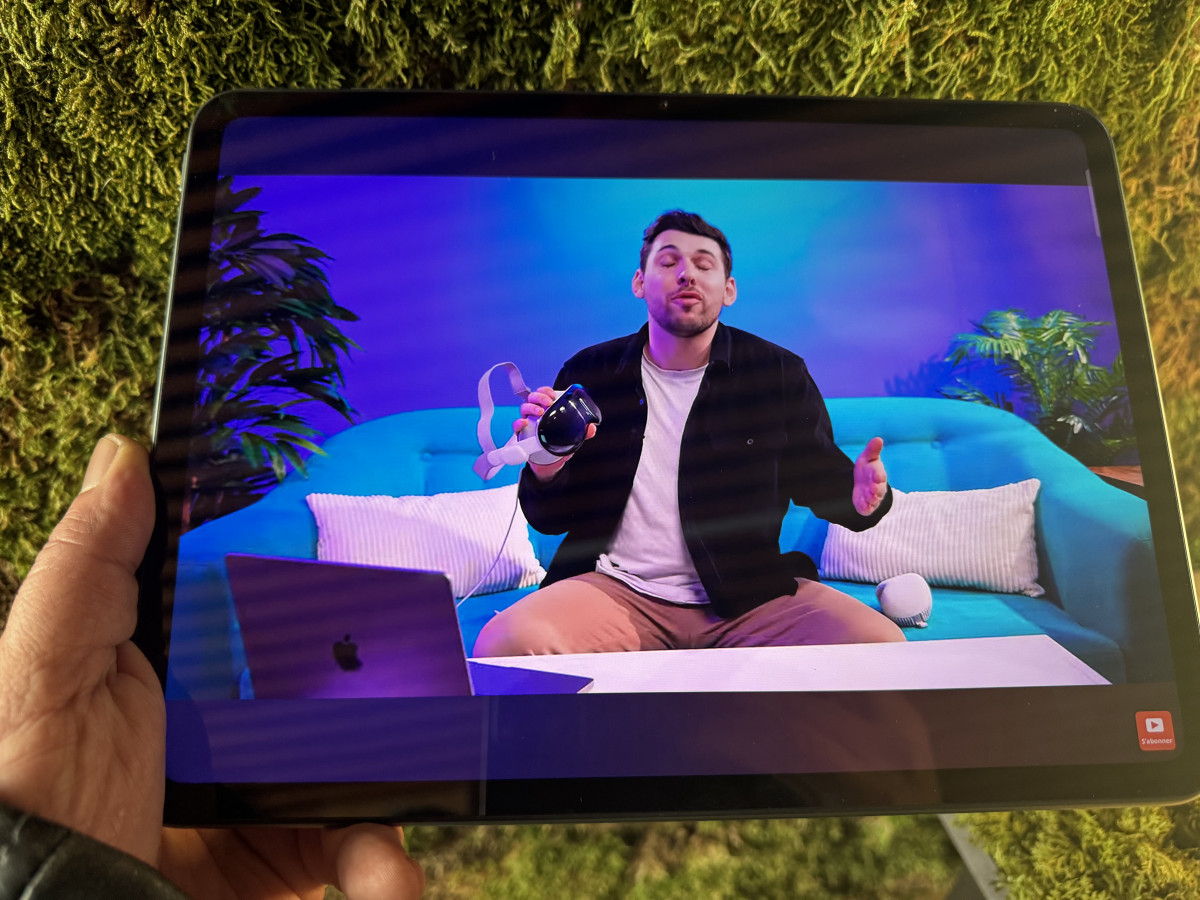
But we were not in the best conditions to really judge it. The brightness level is a little tight, but allows you to use the tablet even in a bright environment. However, when used in direct sunlight, its readability is slightly lower, but less than what the photos might suggest.
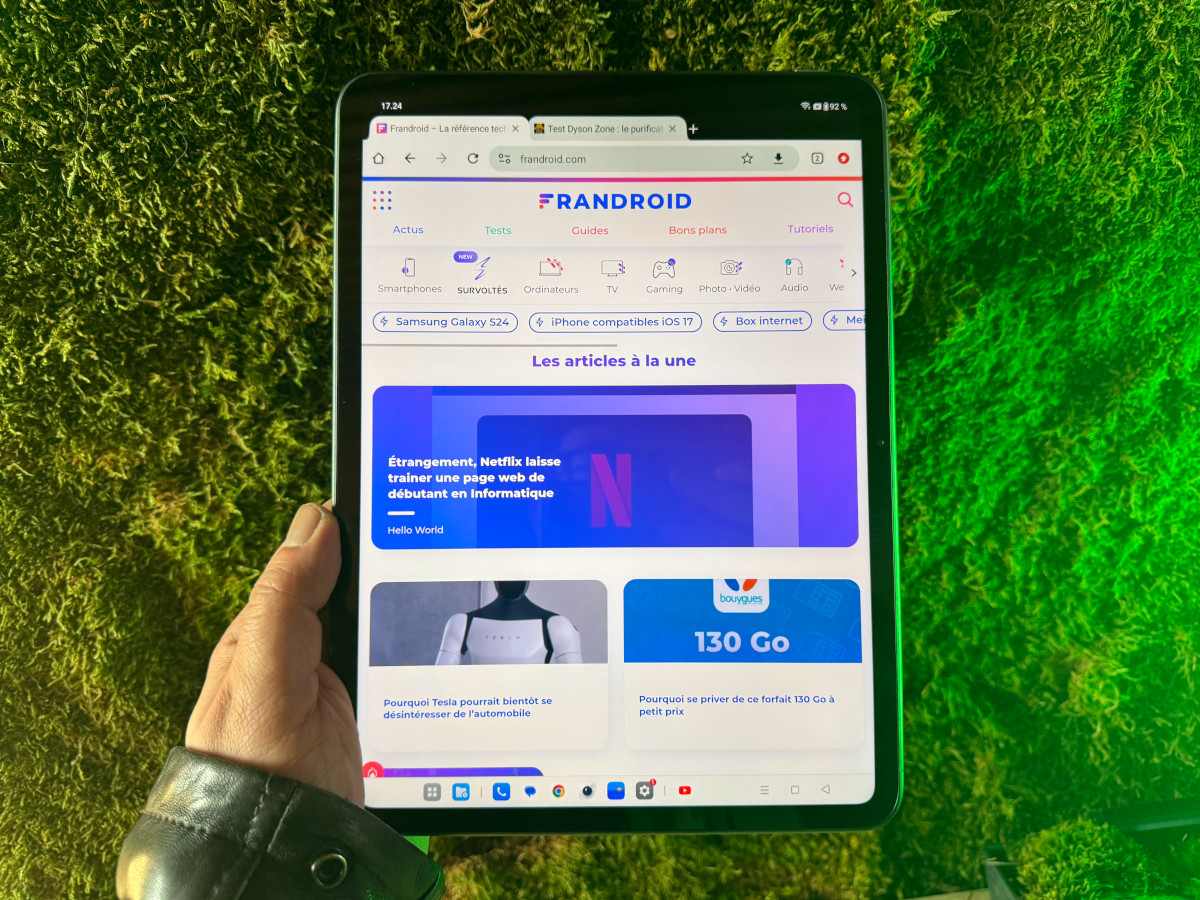
The OnePlus Pad Go is built around a MediaTek Helio G99 processor, supported by 8 GB of LPDDR4X RAM, a Mali-G57 GPU and 128 GB UFS 2.2 of storage space. Up to 1TB of storage space can be added with the microSD card slot. This configuration is balanced and has already demonstrated its capabilities in multimedia and video games on smartphones. It’s not the most powerful tablet, but it should offer very respectable multimedia and gaming performance. We were unable to install Fortnite to get an idea, so you will have to wait for the test.
In terms of connectivity, we are entitled to Bluetooth 5.2 (aptX HD, LDAC, aptX) and Wi-Fi, but in version 5 only and no trace of NFC.
Photography, software and autonomy: the pleasure of use is there
Android 13 is in operation with OxygenOS 13.2 for the graphical interface part. We are in a familiar universe, the interface is clear and deploys a great range of features and customization that Stock Android does not offer.
One of the most worked aspects remains the communication between OnePlus products. As with Huawei or Xiaomi, the Pad Go is designed to exchange information and documents with other home products in the blink of an eye.
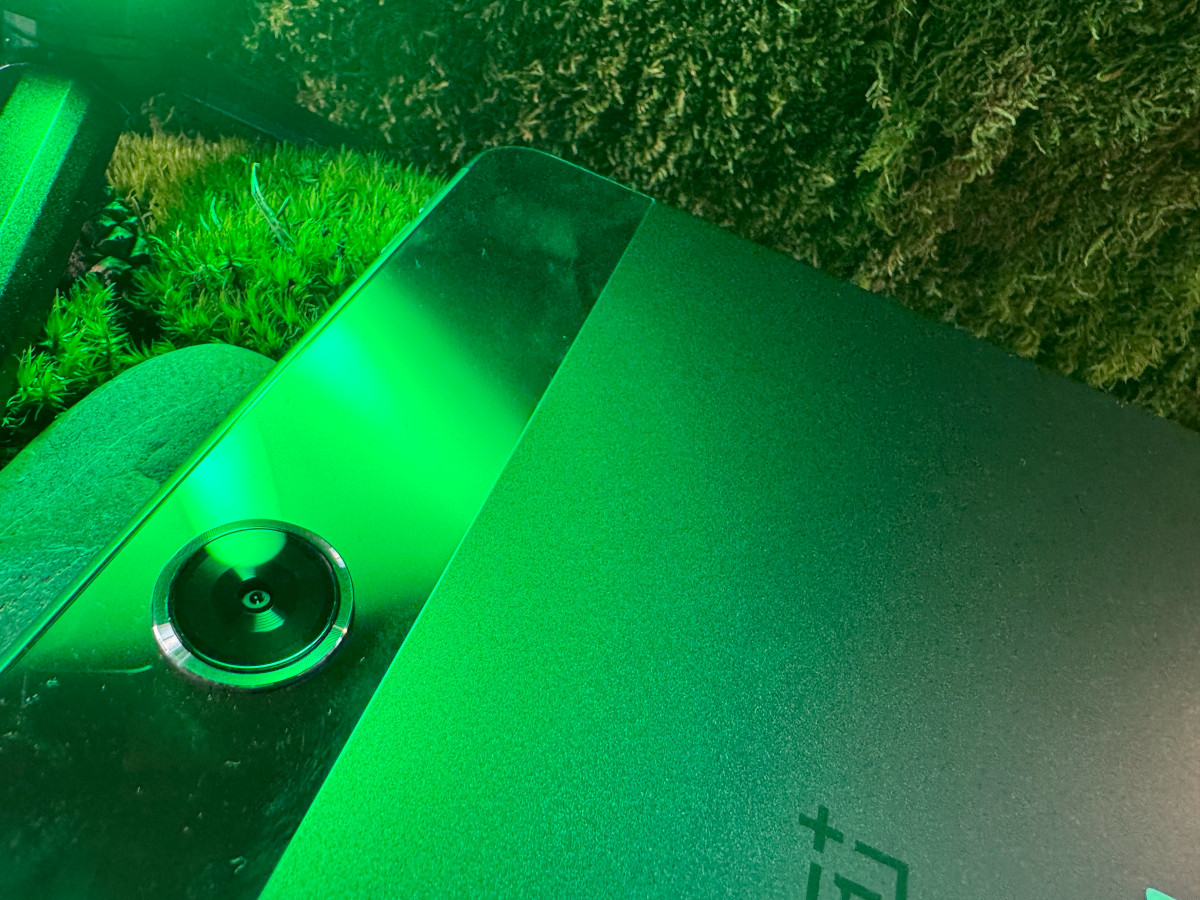
The rear optical unit includes a single 8 Mpx sensor and we have the same on the front, but without EIS stabilization. The rendering of the ten or so photos taken with it is satisfactory for a tablet, but without really making us want to use it regularly to immortalize our memories.
In terms of autonomy, OnePlus wants to cover all possibilities with an 8000 mAh battery and 33 W SuperVooc fast charging. The manufacturer announces up to 514 hours of standby time and a good day of intensive use. To be checked…
The OnePlus Pad Go is positioned as a very well-made mid-range tablet, which also offers a design and a quality finish that certain high-end brands would not deny. It is sold at a price of 329 euros.
